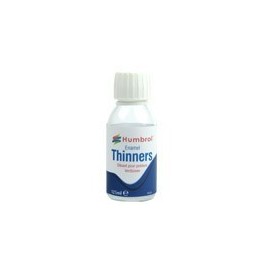There are a number of different options for attaching figures such as a horse and rider to a layout. Perhaps the...
No products
Product successfully added to your shopping cart
There are 0 items in your cart. There is 1 item in your cart.
Search Tips
How can I best clean my brushes after using enamel-based paints?
Cleaning brushes after using enamel-based paints can be a bit trickier than cleaning them after using water-based paints, as enamel paints are oil-based and take longer to dry. Here are some steps you can take to effectively clean your brushes after using enamel-based paints:
Use a brush cleaner or paint thinner: These solvents are specifically designed to dissolve and remove enamel paint from brushes. Dip the brush into the cleaner and work it through the bristles, then rinse the brush with clean solvent or water. It is important to note that prolonged exposure to strong solvents can also weaken the adhesive that attaches the bristles to the brush, so do not leave the brushes in solvents for long periods of time.
Use mineral spirits: These solvents can also be used to clean enamel paint from brushes, although they are generally considered less effective than brush cleaners or paint thinners.
Use soap and water: If the paint is still wet, you can use soap and water to clean the brush. Be sure to use a brush soap or dish soap, as regular hand soap may not be strong enough to remove the paint. Work the soap through the bristles and rinse the brush thoroughly with water.
Use a wire brush or a fine comb: To remove any dried accumulations of paint, use a wire brush or fine comb such as a nit comb to work through the bristles of the brush.
Dry the brush thoroughly: Once you have cleaned the brush, be sure to dry it thoroughly before storing it. Using enamel-based paints and their associated solvent cleaners will work any brush hard so it can also be useful to periodically use a brush conditioner such as Long Live the Brushes' by Mig Jimenez. This will help to protect and condition the bristles increasing brush longevity.
It's important to keep in mind that the longer the paint dries on the brush, the harder it will be to remove. So, it's best to clean the brush as soon as possible after use.
Click here to receive the tips weekly in your mailbox. You can unsubscribe at any time.










